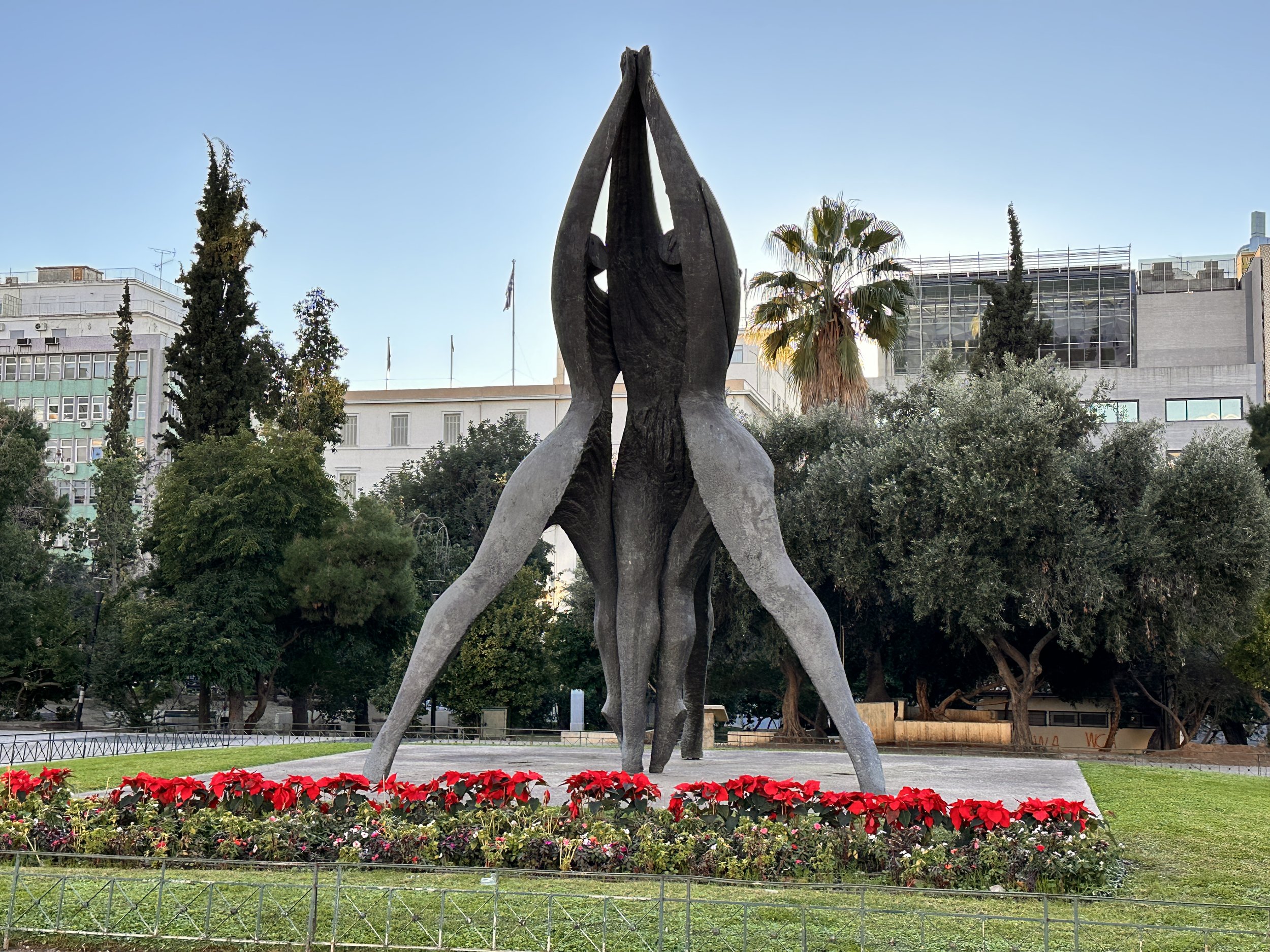Culture Shock
Weird Poros breakfast: eggs benedict with iceberg lettuce and some sort of meat, and pacos - pancake tacos?!
We left the island of Poros in search of a quiet anchorage and time to read, sun, swim and relax. We chose Ligia on the southeast side of Aegina Island based on the prevailing westerlies, and tucked ourselves up near a forested shore. The day passed lazily and as afternoon approached so too did a steady swell. We thought about moving and looking for a smoother spot, but instead we stayed put and hoped it would settle down over time. In fact, it never did. It was a very rolly night and none of us slept all that well.
Wind is, of course, the basic driver of the sea state. A swell is a series of regular waves, over a long period, that is not generated by local winds but formed by wind that blows over a large stretch of ocean - the fetch. The larger the fetch - the higher the swell, even without any local wind. In general, a swell that reaches a coast comes from a distant storm and has been propagated over several hundred kilometers. This is exactly what surfers look for - but not so much anchored boats. Lesson learned.
Aegina town quay
We left the next day after a rocky breakfast and headed around the west side of the island to Aegina Harbor. We hadn’t read much about the town or island but it seemed like a good place to explore and also get a good night’s sleep. We moored at the far side of the town quay with plenty of room as there are very few yachts this time of year. The quay was quite high above the water surface though so it was a bit of a struggle to get ashore to tie up. We checked in, connected to power and water set out to explore.
Don’t be fooled, this is not the cheese counter, it’s merely the feta counter.
We sought out a grocery store and stocked up at a fairly large one with all kinds of goodies we’d not seen elsewhere. We learned that Aegina is known internationally for its pistachios, or fistikia, which are considered to be of the highest quality in the world. The pistachio tree, which is native to Iran, was first brought to the island and the Greek mainland in 1860, and the trees flourished in the Mediterranean climate and unique terrain of Aegina. Today Greece is Europe’s largest exporter of the pistachio and the sixth-largest in the world, making the pistachio an integral part of the country’s agricultural output.
Fistikia
While pistachios are found around the world, the variety found in Aegina, called koilarati, are rare and exceptionally delicious. Most of the island’s pistachio trees are found on the west side of Aegina, were the land is less mountainous and the soil is dry and rich in calcium carbonate. Surprisingly, the lack of irrigation, proximity to the sea, and unique composition of the soil on the island contribute to the unique taste of Aegina’s pistachios.
Another day we strolled the coastal road past a couple of beaches out to a lighthouse. Along the quay locals use fishing boats not only for selling their catch, but also for selling fruit, vegetables and nuts as well. We walked the narrow streets lined with traditional houses and tiny shops selling souvenirs, clothing and folk art. We wondered into the fish-market, bought some fresh tuna for dinner one night, but also enjoyed the fish tavernas behind the market.






























Impromptu jam session
We then headed to Athens to spend a couple of days sightseeing before our daughter flew home. This was a bit overwhelming after a stunning (and calm) anchorage at Salamina Island the night before. The marina sends a skiff to meet you at the entrance and direct you to your berth. Ours turned out to be on a short dock just half a dozen slips from the promenade. We had followed the pilot boat into a super tight spot with yachts literally on all sides, whereupon Tom had to turn the boat 360° in order to back into our slip between two other boats. He did an amazing job spinning us on a dime (while adjacent yacht owners observed anxiously from their bows) and threaded the needle between the neighboring boats. I scrambled around with fenders, lines and boat hooks and got us tied off wedged in on both sides, sky scrapers looming overhead, horns blaring and traffic whizzing by just a stone’s throw away! I experienced what could only be described as culture shock. I felt disoriented and out of sorts when we first went ashore. Hundreds of people, so many noises and the frenetic, city energy. It was mind-boggling.





























We stayed in the marina for a full week so that we could get a couple of minor repairs done (our VHF radio for one!) and so that we could order a watermaker and shop for all the necessary fittings so that Tom can install it next month. Having now walked ALL OVER the city I can honestly say that nearly every neighborhood is lined with orange trees. I’ve no idea if they are ever harvested but they can be found just about everywhere.
Meanwhile, our younger daughter passed through Athens before returning to Alaska and she, her partner, and a friend invited me to join them for a Greek cooking class! We prepared an entire meal: two appetizers (including homemade phyllo dough), salad, two mains, as well as dessert. It was a super fun evening, I learned a bunch and we enjoyed a terrific dinner with local wine and great conversation afterward!





















